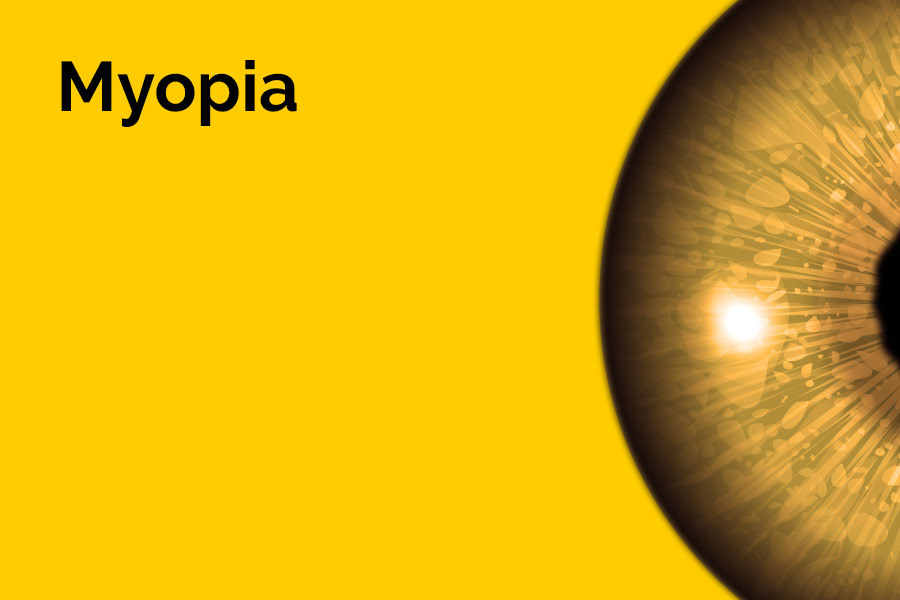Myopia and High Degree Myopia
Myopia (or near-sightedness) is a condition in which people are able to see close objects clearly but struggle to identify objects further away. It is the most common type of refractive error and is thought to affect one in three people in the UK. The condition generally starts in puberty and becomes gradually worse until the eye is fully grown. People with myopia generally have difficulty clearly seeing a television screen or reading road signs.
For the eye to produce a perfectly clear image the cornea must be evenly curved and the eye needs to be the correct length. Myopia occurs if the eyeball is too long or the cornea is too curved. This causes the light entering the eye to not focus correctly resulting in a blurry image being sent to the brain.
Symptoms
If you are near-sighted, you generally find it difficult to read road signs and see distant objects clearly. You will, however, be able to see well for close up tasks such as reading and typing on a mobile phone.
Other signs of myopia include squinting, eye strain and regular headaches. Feeling tired whilst driving or playing sports can also be a sign of uncorrected near-sightedness.
If you experience these signs or symptoms while wearing your glasses or contact lenses, please schedule an eye examination with your ophthalmologist as you may require a stronger prescription.
Diagnosis, Screening and Tests
Your ophthalmologist can diagnose myopia as part of a comprehensive eye examination. They will determine whether you have myopia using a standard vision test, where you are asked to read letters on a chart placed at the other end of a room.
If the vision test reveals that you are near-sighted, your eye doctor will use certain examination devices to learn what is causing myopia. By shining a special light into your eyes, a retinoscopy will be used to see how light reflects off your retina. As the light is reflected back from inside the eye, it can reveal whether a person is near or farsighted.
An instrument called a phoropter is used to measure the amount of refractive error you have any helps determine the prescription required to correct it.
Treatments
All treatments for myopia have the same goal: to provide clearer distance vision.
Eyeglasses or contact lenses are the most common form of correcting myopia symptoms. They work by refocusing light rays on the retina, compensating for the shape of your eye. Eyeglasses can also be used to help protect your eyes from harmful ultraviolet (UV) light rays.
Depending on the degree of myopia, other techniques may be used. Laser-assisted in-situ keratomileusis, also known as LASIK eye surgery, is the most popular surgery used to treat myopia. Like other types of refractive surgery, the LASIK procedure reshapes the cornea to enable light entering the eye to be properly focused onto the retina for clearer vision.
An alternative to LASIK, photorefractive keratectomy (PRK), also involves reshaping the cornea.
In most cases, laser eye surgery is pain-free and completed within 15 minutes for both eyes. The results can usually be seen in as little as 24 hours.
